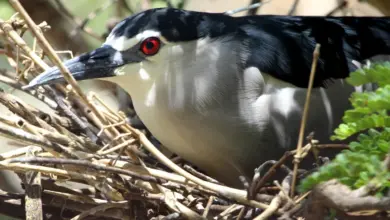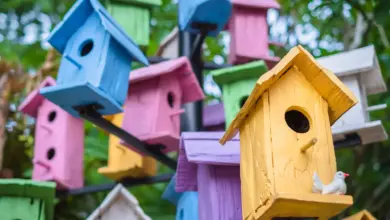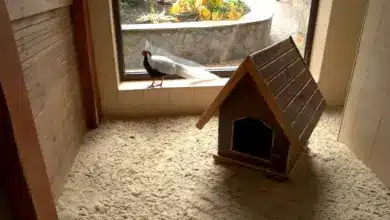Breeding Pheasants: Information on choosing the rights pheasants for you, pairing and setting them up, as well as care requirements.
Start with Healthy Birds:
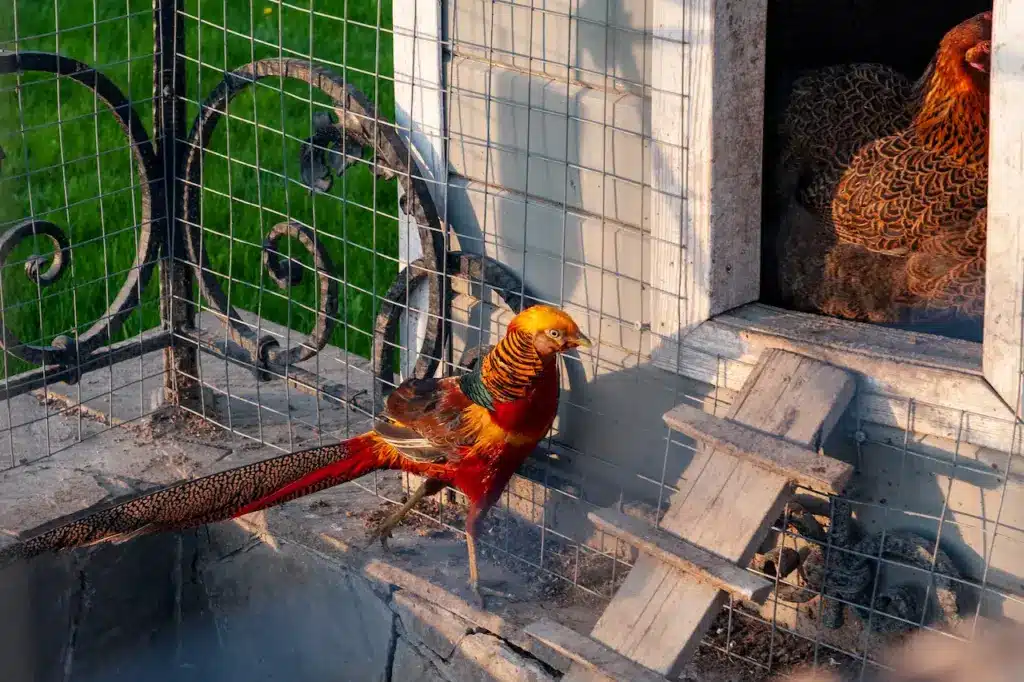
Positive signs of health:
- dry nostrils
- bright eyes (color varies with breed)
- shiny feathers (all present)
- good weight and musculature for age
- clean vent feathers with no smell
- smooth shanks
- straight toes
- the bird alert and active
- Pheasant Diseases
Species Basic Breeding Data:
| Species | Origin | Clutch Size: | Incubation Days: |
| Blood Pheasant | Nepal, Tibet, northern Myanmar, northwest China | 5-12 | 27-29 |
| Blue-eared Pheasant | China | 5-8 | 26-28 |
| Blyth’s Tragopan | China | 2-4 | 28 |
| Bronze-tailed Peacock-pheasant | Sumatra | 2 | 22 |
| Brown-eared Pheasant | Western China | 5-8 | 26-27 |
| Bulwer’s Wattled Pheasant | Borneo | 3-8 | 24-26 |
| Cabot’s Tragopan | Southeastern China | 7/8 | 28 |
| Cheer Pheasant | Pakistan to Nepal | 9-12 | 26 |
| Congo Peafowl | Congo basin | 3-4 | 26 |
| Copper Pheasant | Japan | 6-12 | 25 |
| Edwards’ Pheasant | Eastern India | 4-7 | 25 |
| Elliot’s Pheasant | Eastern China | 6-8 | 25 |
| Germain’s Peacock-pheasant | Cochin China, southern Annam (India) | 2 | 22 |
| Golden Pheasant | Central China | 6-12 | 22 |
| Green Junglefowl | Java, Bali, Lombok and nearby islands in Indonesia. | 6-10 | 21 |
| Green Peafowl | Malay Peninsula, Myanmar, Java | 4-6 | 28 |
| Grey Peacock-pheasant | Sikkim, Myanmar, Thailand, Annam | 2 | 22 |
| Himalayan Monal | Western to eastern Himalayas | 4-8 | 28 |
| Hume’s Pheasant | Northern Myanmar, northeastern India | 6-11 | 27-28 |
| Imperial Pheasant | India | 5-7 | 25 |
| Indian Peafowl (Blue Peafowl) | India | 4-8 | 27-29 |
| Kalij Pheasant | Pakistan to Bangladesh | 9-15 | 24-25 |
| Koklass Pheasant | Afghanistan, Pakistan, northern India, Tibet, China | 9-12 | 26-27 |
| La Fayette’s Junglefowl | Sri Lanka | 2-4 | 20-21 |
| Lady Amherst’s Pheasant | South China | 6-12 | 22 |
| Lesser Bornean Crested Fireback | Java, Borneo | 4-8 | 24 |
| Malay Crested Fireback | Borneo | 3-6 | 22-24 |
| Malay Great Argus | Malay Peninsula | 2 | 24-25 |
| Malay Peacock-pheasant | Malay Peninsula | 2 | 22 |
| Mikado Pheasant | Taiwan | 5-10 | 27 |
| Molesworth’s Tragopan | China | 2/4 | 28 |
| Palawan Peacock-pheasant | Philippines | 2 | 18-19 |
| Red Junglefowl | Pakistan to Java | 8-10 | 19-21 |
| Reeve’s Pheasant | Northern China | 7-14 | 25 |
| Rothschild’s Peacock-pheasant | Malay Penisula | 2 | ? |
| Salvadori’s Pheasant | Sumatra | 2 | 22 |
| Satyr Tragopan | (Northern India, Sikkim, Bhutan | 2-4 | 28 |
| Siamese Fireback | Indo-China, Thailand | 5-8 | 24-25 |
| Silver Pheasant | (China to Myanmar and Vietnam | 4-6 | 25-26 |
| Sonnerat’s Junglefowl | Southern India | 4-8 | 20-21 |
| Swinhoe’s Pheasant (Lophura swinhoei) (Vulnerable) | Taiwan | 6-12 | 25 |
| Szechuan White-eared Pheasant (Crossoptilon crossoptilon) (Vulnerable/endangered) | China | 4-7 | 24-25 |
| Temminck’s Tragopan (Tragopan temmincki) (Safe) | China | 7-8 | 28 |
| Vietnamese Pheasant (Lophura hatinhensis) (Endangered) | Vietnam | 5-7 | 22 |
| Western Tragopan (Tragopan melanocephalus (Vulnerable) | Western Himalayas | 3-4 | 28 |
Individual pen matings
- Pros:
- Individual pen matings allow the performance of each male, and the performance of the hens mated with that male, to be accurately assessed.The males are not able to fight each other, so fertility should be higher, and there will be fewer broken eggs.
- Cons:
- Individual pen matings are uneconomic and inefficient in a commercial pheasant meat operation, but they can be used in a breeding program to test the performance of certain strains of birds.
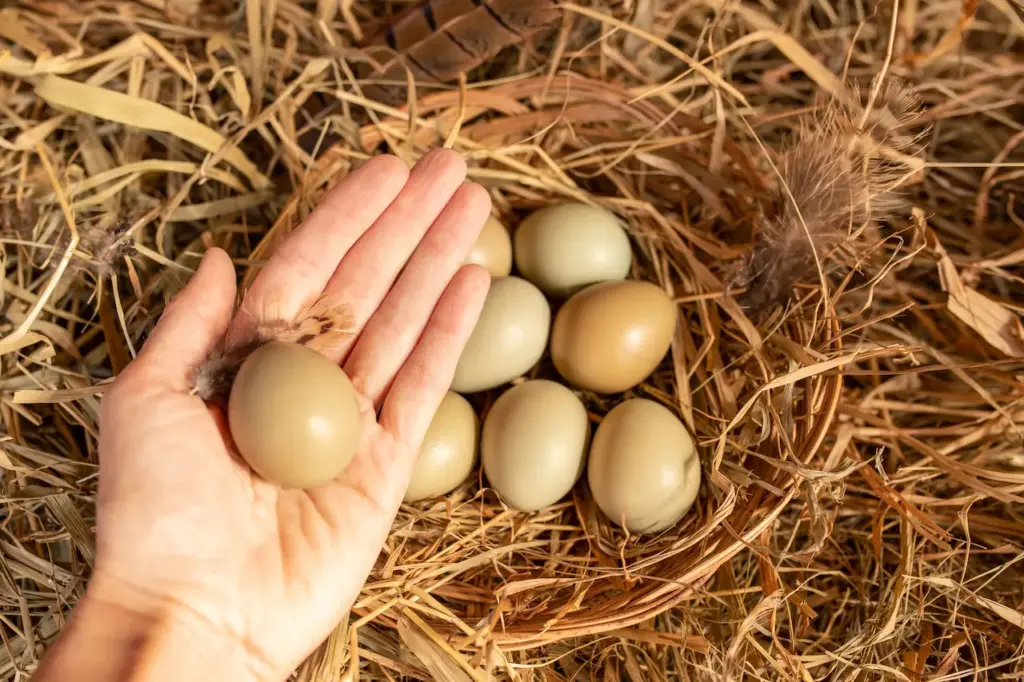
Range conditions
- Under range conditions, many pheasants can be mated at minimal cost. For range breeding, each bird needs about 2 m2 of ground space.
- The site chosen should be a dry, well-drained, sheltered area — green pasture is not required.
- Make sure there is good cover where hens can shelter from overzealous cocks. Good cover will also encourage hens to lay eggs at central points, preventing them from being scattered over the yard.
Special Requirements:
Pheasants are not good sitters and eggs may need to be incubated to ensure a successful hatch. For your information: it takes about 23 days for ornamental pheasant (i.e., Goldens, Amherst, Nepals, Firebacks, Silvers and Reeves) eggs to hatch and about 25 days for the eggs of the game birds (Chinese ringnecks, Mongolian and Blackneck) to hatch.
Diet:
As pheasants are naturally omnivorous, they will eati everything from fruit and vegetables, seeds, grains, roots, bulbs, leaves, insects, grasshoppers, slugs and snails to small lizards. In captivity, they need access to live protein (mealworms or clean maggots) as inadequate protein may exacerbate their tendency to cannibalism.
Commercial mixed grain rations are available (ensure they are high protein) or use varieties which include a corn base with protein, soya bean, meal and vitamins. Breeders advise against feeding layer mash but turkey ration is acceptable. This can be supplemented with greens, diced apple and grated carrot.
As is the case with all birds, pheasants need a constant supply of clean water. Keep clean, fresh and flowing.
Tip: Hiding medication in their favorite foods is a stress-free, convenient way to administer medicine.
Reproductive Problems
- Infectious Bronchitis causes mis-shapen eggs and weak shells
- Stress can cause mis-shapen eggs
- Calcium needed in diet as shell calcium taken from bones daily
- Egg peritonitis: common in good layers such as hybrids and light pure breeds
- Infection can delay onset of laying
- Egg bound: lack available calcium
- Vent gleet
Breeding Pheasants
Author: Randy Sell, Research Assistant
Department of Agricultural Economics, NDSU
Breeding
Pheasants are seasonal breeders. The roosters begin strutting and breeding displays when the days become longer, usually toward the end of March. Roosters will also fight one another to establish dominance.
When raising them in confinement, it is a good idea to have no more than one rooster per eight hens, with ten hens per rooster optimum.
Hens will begin laying eggs about the middle of April and continue into June. A single hen should provide about 15 fertile eggs if eggs are collected daily and the hens are not allowed to begin incubation of a nest.
Incubators
Pheasant hens are quite capable of incubating, brooding and raising young pheasants. However, for commercial production it is generally advisable to either buy day-old pheasant chicks or hatch them in an incubator.
Allowing the hens to hatch the eggs in confinement generally results in excessive losses of eggs, chicks and hens. Another advantage of incubators is avoiding the risk of transmitting contagious diseases.
It is highly recommended to get directions on incubator operation from the incubator’s manufacturer. The simplest machines provide constant heat for eggs, while such things as turning, ventilating and maintaining humidity must be done manually.
More expensive and complicated incubators regulate these processes automatically.
Pheasant eggs should be collected daily. Incubation should begin before eggs are 11 days old, since fertility begins to drop as eggs get older. Eggs that are stored should be turned twice a day to avoid hatching weak chicks. Eggs should not be stored in places over 50 degrees Fahrenheit.
The eggs should have a soft sheen; if the eggs are spotted, dull and dirty, they are probably not worth trying to hatch. If space in the incubator is limited, it is possible to test (candle) the eggs.
A test lamp is easy to construct; simply make a hole in a tin can large enough to stand a pheasant egg in it. Place the can over a small light bulb. If the eggs are clear (without small blood clots), they are not fertile.
Humidity in the incubator should be between 45 and 50 percent and the temperature should be 95 F. Ringneck pheasants will begin hatching after 24 and a half days.
Brooding
Once all the pheasant chicks have hatched, they should be kept in the incubator until they are completely dry. The more expensive incubators have a nursery section which enables the chicks to dry completely in a controlled environment for 12 to 24 hours after hatching. The chicks should not be fed during this period because they are absorbing the remainder of the yolk sac. Providing food to the chicks before the yolk sac is digested may cause intestinal upsets.
The maximum temperature at ground level under the brooder for day-old chicks should be no more than 105 F. The type of brooder to use depends on the number of chicks.
For 50 chicks or less, a 250-watt infrared heat lamp is appropriate. If more than 50 chicks are in the brooder, more than one heat lamp will be needed.
Large gas or electrically operated brooders with a thermostatic control are generally used for more than 300 chicks.
Pheasant diseases are most easily spread through dirty feeding and watering equipment. Cleaning the feeders and water fountains with scalding water once a day is recommended.
The feeders should be thoroughly dry before filling again. Small stones should be placed in the fountains to prevent the chicks from falling in the water.
A chick guard should be placed around the brooding area for the first 3 to 4 days. A chick guard is rolled cardboard, 24 to 30 inches high, which is used to keep the birds near food, water and the brooder.
After the first week, begin reducing the temperature of the brooder until supplemental heat is no longer needed by the end of the fourth week. After the first week chicks e can be let outdoors on warm, sunny afternoons.
If the facilities don’t allow access to the outdoors on sunny days, putting green branches and weeds in their pen will curtail cannibalism.
Provided the weather is not unusually cold, the birds can begin to be placed in outdoor pens called flyways at 5 to 6 weeks of age. The birds will do better if the flyways are well grown with grass, weeds or other cover.
Feeding adults and chicks
After one day of age, chicks should be allowed access to game bird chick starter. The feed must be a game bird starter, since domestic chicken starters are unsatisfactory for young pheasants.
The starter pellets can be scattered on paper plates until the chicks are started on feed. Green paper plates may be helpful in getting the chicks to eat, for they are attracted to the green color.
After the chicks are one week old they can be started on game bird grower. Depending on the formulation of the feed, game bird grower may be satisfactory feed until the birds reach maturity at 16 weeks.
The chicks will require up to 1 pound of starter, which is a one-week supply, and about 10 pounds of grower, a 15-week supply, to reach mature size.
Mature size for hens and roosters is 4.75 and 5.5 pounds, respectively. Grit should be sprinkled on the feed every four days, until the chicks are placed in the flyways.
An adult pheasant will require about 5.5 pounds of feed per month to maintain condition. Beginning about three weeks before egg laying begins, the hens should be fed a higher quality laying ration.
Laying rations typically used for domestic pheasants may be substituted for hen pheasants at this stage. This ration should be fed throughout the laying season.
Buildings, facilities and equipment
Pheasant chicks need to be housed in some type of building until 5 to 6 weeks of age. The chicks can be kept in buildings which allow 4 to 5 square feet per chick. Chicken brooder houses or coops will work well for young pheasants.
Adult pheasants in confinement in North Dakota generally may be kept in flyways year around. Having access to a building to provide shelter during the worst of winter storms is recommended.
Pheasants are relatively hardy game birds and can withstand cold temperatures if well fed and protected from the wind.
The flyways are where the birds will spend the majority of the year. They should be 6 to 7 feet high and 15 to 20 feet wide with nylon netting over the top.
Chicken wire with 1-inch spacings is satisfactory for the sidewalls. The bottom of the chicken wire should be buried 6 inches to 1 foot underground to prevent it from being pushed out and to discourage predators from burrowing under thewire.
If chicks younger than 10 days old are allowed in the flyways, a solid border should be placed along the bottom 10 inches of the fence, as these chicks can squeeze through the 1-inch chicken wire.
Flyways should provide some shade. Shade is provided by laying burlap or evergreen branches on the nylon roof netting. If burlp is used, it should be secured to the flyway roof so it does not flap, as this may frighten the chicks into corners where they may smother.
The flyways should also provide an adequate amount of cover to allow the birds “hiding” places. There can not be too much cover in the flyways as long as feeding and watering of the birds is possible.
The hiding places are useful for several reasons. If the birds have enough cover to hide or get away from other birds, there will be less cannibalism. Also, the birds will panic less and injuries will be reduced.
Furthermore, if the pheasants are being kept for breeding purposes, the addition of straw bales will provide suitable nesting areas from which eggs can be collected.
An incubator is needed only if a breeding flock of pheasants is to be maintained. Other equipment needed for pheasants includes brooders, feeders, water fountains and fencing materials.
Predators
Rats may be a problem in pheasant brooding areas, in building walls and under floors. While rats will not prey on mature birds, they will kill young chicks and eat eggs.
In addition to carrying diseases, rats may attract other predators such as mink, weasels and foxes.
Rats are best controlled by keeping trash and rubbish cleaned up and not allowing the rats access to pheasant feed storage areas. There are several commercial poisons for controlling rat populations on the farm.
Larger predatory mammals are generally only a problem if they can get access to the flyways. If raccoons, mink or foxes are a problem in the area, leg-hold traps may aid in control.
Owls can be a problem for domestic pheasant production. Producers report owls flying over the flyways and panicking pheasants into injuring themselves, or owls may snatch pheasants by the head if they stick their heads through the wire in an attempt to escape.
With well-constructed flyways and adequate clean-up of waste feed and trash, most predatory losses can be prevented.
